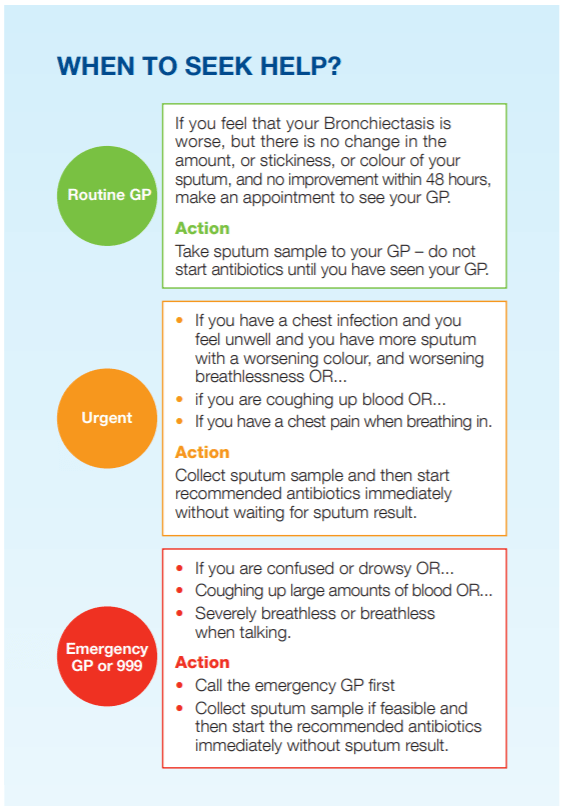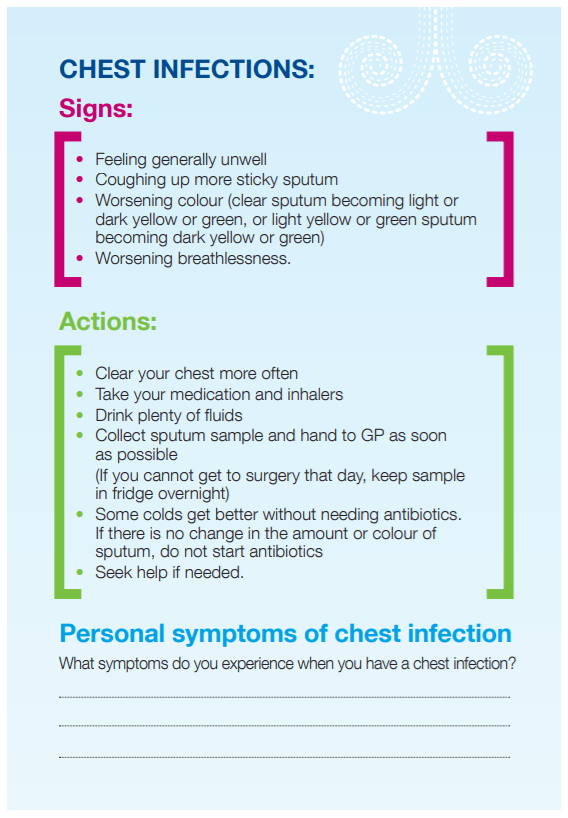What are the main treatments in bronchiectasis?
In most cases treatment involves three basic elements:
- Regular chest clearance to remove sputum and improve symptoms
- Avoidance of chest infections
- Prompt antibiotics for chest infections
Does everybody need the same treatment?
No – because there are different levels of severity of bronchiectasis and so the treatment planned for you will depend on the severity of your condition.
 Some patients have very mild disease and they do not always cough up sputum and only have very few chest infections. Patients with more severe bronchiectasis may have symptoms all the time producing large volumes of coloured sputum and often experience frequent chest infections.
Some patients have very mild disease and they do not always cough up sputum and only have very few chest infections. Patients with more severe bronchiectasis may have symptoms all the time producing large volumes of coloured sputum and often experience frequent chest infections.
Personalised self-management plans are very useful in aiding patients to manage their symptoms, manage exacerbations (chest infections) and when to seek help.
How are chest infections treated?
For all chest infections it is advised that a sputum sample be handed into your GP and then to start antibiotics as soon as possible and not to wait for
 the sputum results to come back which can take several days. The reason why you are asked to hand in a sputum sample is because chest infections can be caused by different bacteria (bugs). Further tests are then done to identify the best antibiotic/s to treat the bacteria. This is important information, especially if your chest infection in not getting better with the recommended treatment.
the sputum results to come back which can take several days. The reason why you are asked to hand in a sputum sample is because chest infections can be caused by different bacteria (bugs). Further tests are then done to identify the best antibiotic/s to treat the bacteria. This is important information, especially if your chest infection in not getting better with the recommended treatment.
Most infections are treated with tablets you take by mouth but in some cases we recommend you receive antibiotics directly into your veins (intravenous treatment). This intravenous treatment may be needed because you may be very ill needing to come to get hospital treatment, or you may have difficult to treat bacteria.
Last Reviewed -10th July 2019

